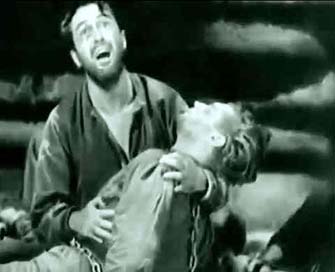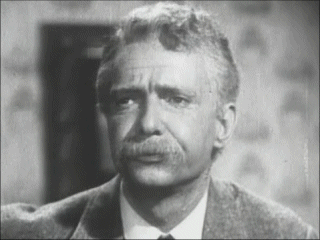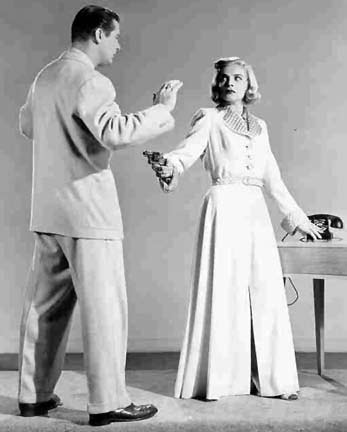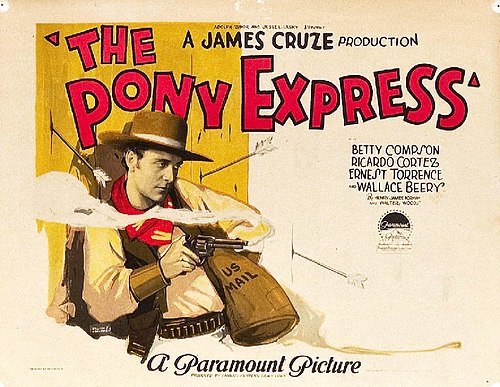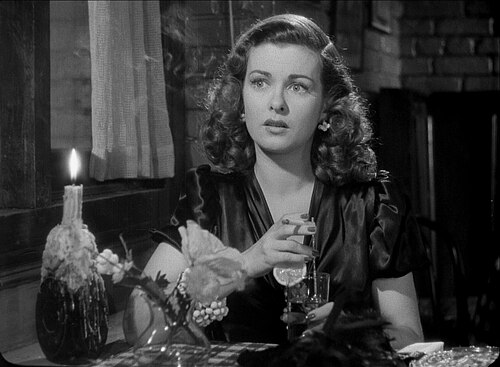Advertisement
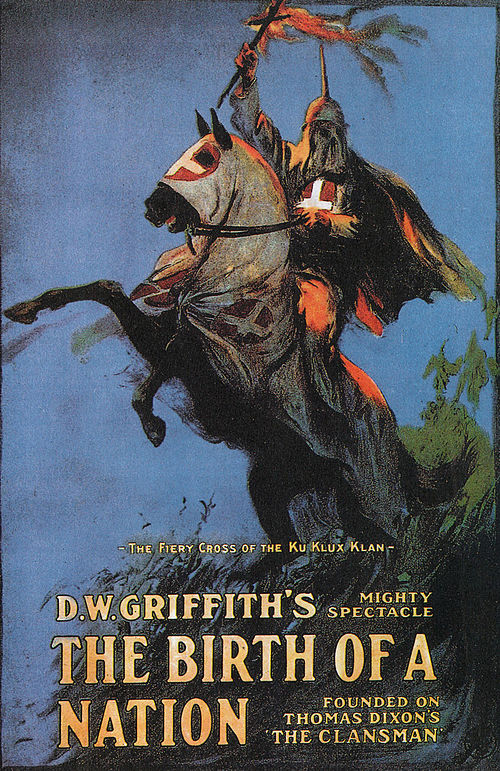
Image source: Wikimedia Foundation (wikimedia.org)
Download Movie [Video Format: MP4]
Movie Source: Internet Archive (archive.org)
Advertisement
Advertisement
The Birth of a Nation
1915
In its time, "The Birth of a Nation" was a masterpiece. Its racist undertones and revisionism are quite disturbing, but it is still worth watching for its historical influence. IMDb entry: http://imdb.com/title/tt0004972/
File:Birth of a Nation (1915).webm
The Birth of a Nation (originally called The Clansman) is a 1915 American Silent film drama film directed by D. W. Griffith and based on the novel and play The Clansman, both by Thomas Dixon, Jr. Griffith co-wrote the screenplay (with Frank E. Woods), and co-produced the film (with Harry Aitken). It was released on February 8, 1915. The film was originally presented in two parts, separated by an intermission. It was the first 12-reel film in America.<>Review, synopsis and link to watch the film: </>
The film chronicles the relationship of two families in American Civil War and Reconstruction era of the United States-US era: the pro-Union (American Civil War) Northern United States Stonemans and the pro-Confederate States of America Southern United States Camerons over the course of several years. The Assassination of Abraham Lincoln of President of the United States Abraham Lincoln by John Wilkes Booth is dramatized.
The film was a commercial success, but was highly controversial owing to its portrayal of African-American men (played by White people actors in blackface) as unintelligent and sexually aggressive towards white women, and the portrayal of the Ku Klux Klan (whose original founding is dramatized) as a heroic force.<>MJ Movie Reviews – Birth of a Nation, The (1915) by Dan DeVore] </><></> There were widespread African-American protests against The Birth of a Nation, such as in Boston, while thousands of white Bostonians flocked to see the film.< name="NAACP"></> The NAACP spearheaded an unsuccessful campaign to ban the film.</>
The film is also credited as one of the events that inspired the formation of the "second era" Ku Klux Klan at Stone Mountain, Georgia (U.S. state), in the same year. The Birth of a Nation was used as a recruiting tool for the KKK.<></> Under Democratic President Woodrow Wilson, it was the first motion picture to be screened in the White House.<></></> go to South Carolina in 1871 to observe the situation first hand. Black soldiers parade through the streets. During the election, whites are turned away while blacks stuff the ballot boxes. Lynch is elected Lieutenant Governor. The newly elected mostly-black legislature is shown at their desks, with one member taking off his shoe and putting his feet up, and others drinking liquor and feasting. They pass laws requiring white civilians to salute black officers and allowing mixed-race marriages.
Meanwhile, inspired by observing white children pretending to be ghosts to scare off black children, Ben fights back by forming the Ku Klux Klan. As a result, Elsie breaks off their relationship out of loyalty to her father. Gus, a freedman and soldier who is now a Captain, follows Flora Cameron as she goes alone to fetch water. He tells her he is looking to get married. Frightened, she flees into the forest, pursued by Gus. Trapped on a precipice, Flora warns Gus she will jump if he comes any closer. When he does, she leaps to her death. Ben finds his sister, having run through the forest looking for her and seen her jump, and holds her as she lies dying. The Klan hunts Gus down, tries him, and finds him guilty. The clansmen leave his corpse on Lynch's doorstep.
Lynch orders a crackdown on the Klan. Dr. Cameron, Ben's father, is arrested for having Ben's Klan costume, a crime punishable by death. Ben and their faithful servants rescue him, and the Camerons flee. When their wagon breaks down, they make their way to a small hut, home to two former Union soldiers, who agree to hide them. As an intertitle states, "The former enemies of North and South are united again in defense of their Aryan birthright."
Austin Stoneman leaves to avoid being connected with Lynch's crackdown. Elsie, learning of Dr. Cameron's arrest, goes to Lynch to plead for his release. Lynch tries to force Elsie to marry him and she finally faints. Stoneman returns, causing Elsie to be placed in another room, and is happy at first when Lynch tells him he wants to marry a white woman, but is angered when Lynch tells him which one. Disguised Klansmen spies discover Elsie's plight when she breaks a window and cries for help and leave to get help. She falls unconscious again, and revives gagged and being bound. The Klan, gathered together at full strength and with Ben leading them, rides in to regain control of the town. When news reaches Ben about Elsie, he and others go to her rescue. Elsie frees her mouth and screams for help. Lynch is captured. Victorious, the clansmen celebrate in the streets. Meanwhile, Lynch's militia surrounds and attacks the hut where the Camerons are hiding. The clansmen, with Ben at their head, race to save them just in time.
The next election day, blacks find a line of mounted and armed Klansmen just outside their homes, and are intimidated into not voting. The film concludes with a double honeymoon of Phil Stoneman with Margaret Cameron and Ben Cameron with Elsie Stoneman. The masses are shown oppressed by a giant warlike figure who gradually fades away. The scene shifts to another group finding peace under the image of Christ. The penultimate title rhetorically asks: "Dare we dream of a golden day when the bestial War shall rule no more? But instead-the gentle Prince in the Hall of Brotherly Love in the City of Peace."
Cast
- Lillian Gish as Elsie Stoneman
- Mae Marsh as Flora Cameron
- Henry B. Walthall as Colonel Ben Cameron
- Miriam Cooper as Margaret Cameron
- Ralph Lewis (actor) as Austin Stoneman
- George Siegmann as Silas Lynch
- William De Vaull as Jake
- Walter Long (actor) as Gus
- Robert Harron as Tod Stoneman
- Wallace Reid as Jeff the blacksmith
- Joseph Henabery as Abraham Lincoln
- Elmer Clifton as Phil Stoneman
- Josephine Crowell as Mrs. Cameron
- Spottiswoode Aitken as Dr. Cameron
- George Beranger as Wade Cameron
- Maxfield Stanley as Duke Cameron
- Jennie Lee (actor) as Mammy
- Donald Crisp as General Ulysses S. Grant
- Howard Gaye as General Robert E. Lee
Uncredited:
- Mary Alden as Lydia Brown
- Monte Blue
- Bobby Burns as Klan Leader
- David Butler (director) as Union soldier / Confederate soldier
- Peggy Cartwright as Young girl
- John Ford as Klansman
- Gibson Gowland
- Sam De Grasse as Senator Charles Sumner
- Olga Grey as Laura Keene
- Russell Hicks (actor)
- Elmo Lincoln as Blacksmith
- Eugene Pallette as Union soldier
- Vester Pegg
- Alma Rubens
- Charles Stevens (actor) as Volunteer
- Madame Sul-Te-Wan as Black woman
- Raoul Walsh as John Wilkes Booth
- Jules White
- Violet Wilkey as young Flora
- Tom Wilson (actor) as Stoneman's servant
- Mary Wynn
Production
File:Birth-of-a-nation-klan-and-black-man.jpg." Gus was portrayed in blackface by white actor Walter Long (actor).}}}The Birth of a Nation began Principal photography in 1914 and pioneered such camera techniques as the use of panoramic long shots, the iris effects, still-shots, night photography, Panning (camera) camera shots, and a caully staged battle sequence with hundreds of extras made to look like thousands. It also contains many new artistic techniques, such as color tinting for dramatic purposes, building up the plot to an exciting climax, dramatizing history alongside fiction, and featuring its own musical score written for an orchestra.
When the film was released, it shattered both box office and film-length records, running three hours and ten minutes. In 1998, it was voted one of the "AFI's 100 Years... 100 Movies" (#44) by the American Film Institute.
The film was based on Thomas Dixon, Jr.'s novels The Clansman and The Leopard's Spots. It was originally to have been shot in Kinemacolor but D. W. Griffith took over the Hollywood studio of Kinemacolor and Kinemacolor's plans to film Dixon's novel. Griffith, whose father served as a colonel in the Confederate Army, agreed to pay Thomas Dixon $10,000 (equal to $}} today) for the rights to his play The Clansman. Since he ran out of money and could afford only $2,500 of the original option, Griffith offered Dixon 25 percent interest in the picture. Dixon reluctantly agreed, and the unprecedented success of the film made him rich. Dixon's proceeds were the largest sum any author had received for a motion picture story and amounted to several million dollars.
Griffith's budget started at US$40,000 (equal to $}} today), but the film finally cost $112,000 As a result, Griffith had to seek new sources of capital for his film. A ticket to the film cost a record $2 (equal to $}} today).
For The Birth of a Nation, composer Joseph Carl Breil created a three-hour long musical score that combined all three types of music in use at the time: adaptations of existing works by classical composers, new arrangements of well-known melodies, and original composed music.< name="hickman77"/> Though it had been specifically composed for the film, Breil's score was not used for the Los Angeles première of the film at Clune's Auditorium, but music compiled by the Carli Elinor was performed instead. Breil's score was not used until the film debuted in New York at the Liberty Theatre.< name="hickman78"/>< name="marks-1997"/>
The adapted classical music used in the film contained, among others, passages from Der Freischütz by Carl Maria von Weber, Leichte Kavallerie by Franz von Suppé, Symphony No. 6 (Beethoven) by Ludwig van Beethoven, and Ride of the Valkyries by Richard Wagner, the latter used as a leitmotif during the ride of the KKK.< name="hickman77"/> Breil also arranged several traditional and popular tunes that would have been recognizable to audiences at the time, including many Southern melodies; among these songs were "Maryland, My Maryland", "Dixie (song)", "Old Folks at Home", "The Star-Spangled Banner", "America the Beautiful", "The Battle Hymn of the Republic", "Auld Lang Syne", and "Where Did You Get That Hat?".< name="hickman77"/>< name="allmusic"> |title=Birth of a Nation [Original Soundtrack] |first=Bruce |last=Eder |accessdate=February 6, 2014 |website=AllMusic |publisher=All Media Network, LLC }}</>
In his original compositions for the film, Breil wrote numerous leitmotifs to accompany the appearance of specific characters. The principal love theme that was created for the romance between Elsie Stoneman and Ben Cameron was published as "The Perfect Song" and is regarded as the first marketed "theme song" from a film; it was later even used as the theme song for the popular sitcom Amos 'n' Andy.< name="marks-1997"></>
Responses
}The National Association for the Advancement of Colored People (NAACP), founded in 1909, protested premieres of the film in numerous cities. According to the historian David Copeland, "by the time of the movie's March 3 [1915] premiere in New York City, its subject matter had embroiled the film in charges of racism, protests, and calls for censorship, which began after the Los Angeles branch of the National Association for Colored People requested the city's film board ban the movie. Since film boards were comprised almost entirely of whites, few review boards initially banned Griffith's picture".NAACP – Timeline </>
When the film was shown, riots broke out in Boston, Philadelphia and other major cities. The film's inflammatory character was a catalyst for gangs of whites to attack blacks. In , after seeing the film, a white man murdered a black teenager.</>
=Box office performance=
The box office gross of The Birth of a Nation is not known, and was long subject to exaggeration.</> The Encyclopedia of American Race Riots says The Birth of a Nation earned "more than $10 million at the box office in 1915. By 1949, it had earned $50 million."< name="Gross"></> In 1977, Variety (magazine) revised its estimate of the producer's gross from $50 million down to $5 million.< name="Schickel_281"/> The film historian </> In the biggest cities, Epoch negotiated with individual theater owners for a percentage of the box office; elsewhere the producer sold all rights in a particular state to a single distributor (an arrangement known as "state's rights" distribution).<></> Schickel says that under the state's rights contracts, Epoch typically received about 10% of the box office gross—which theater owners often underreported—and concludes that "Birth certainly generated more than $60 million in box-office business in its first run".< name="Schickel_281"/>Ideology and accuracy
}The film is controversial due to its interpretation of history. University of Houston historian Steven Mintz summarizes its message as follows: Reconstruction era of the United States was a disaster, blacks could never be racial integration into white society as equals, and the violent actions of the Ku Klux Klan were justified to reestablish honest government.</>}}
Despite some similarities between the Congressman Stoneman character and Rep. Thaddeus Stevens of Pennsylvania, Rep. Stevens did not have the family members described and did not move to South Carolina during Reconstruction. He died in Washington, DC in 1868. However, Stevens was widely rumored to keep Lydia Hamilton Smith, who was generously provided for in his will.
Significance
}Released in 1915, The Birth of a Nation has been credited as groundbreaking among its contemporaries for its innovative application of the medium of film. According to the film historian Kevin Brownlow, the film was "astounding in its time" and initiated "so many advances in film-making technique that it was rendered obsolete within a few years." The content of the work, however, has received widespread criticism for its blatantly racist and fantastical depictions of scenes that are presented onscreen as if in documentary form. Film critic Roger Ebert writes, "Certainly The Birth of a Nation (1915) presents a challenge for modern audiences. Unaccustomed to silent films and uninterested in film history, they find it quaint and not to their taste. Those evolved enough to understand what they are looking at find the early and wartime scenes brilliant, but cringe during the postwar and Reconstruction scenes, which are racist in the ham-handed way of an old minstrel show or a vile comic pamphlet."< name=Ebert></>
The film held the mantle of the Timeline of highest-grossing films until it was overtaken by Gone with the Wind (film).<></>
In 1992, the United States Library of Congress deemed the film "culturally, historically, or aesthetically significant" and selected it for preservation in the National Film Registry. Despite its controversial story, the film has been praised by film critics such as Roger Ebert, who said: "The Birth of a Nation is not a bad film because it argues for evil. Like Riefenstahl’s Triumph of the Will, it is a great film that argues for evil. To understand how it does so is to learn a great deal about film, and even something about evil."</>
According to a 2002 article in the Los Angeles Times, the film facilitated the ounding of the Ku Klux Klan in the 1920s.</> Despite its success in the foreign market, the film was not a success among the American audiences.<></> It is believed that it is now a lost film.
New opening titles on re-release
One famous part of the film was added by Griffith only on the second run of the filmThis includes the one at the Internet Movie Archive and the Google video copy http://video.google.com/videoplay?docid=-5639233838609252948# and Veoh [http://www.veoh.com/browse/videos/category/entertainment/watch/v1640308YD8z9qcp Watch Videos Online | The Birth of a Nation | Veoh.com. However, of multiple YouTube copies one which has the full opening titles is </><br />These are the second and third of three opening title cards which defend the film. The added titles read:
<blockquote>
A PLEA FOR THE ART OF THE MOTION PICTURE:
We do not fear censorship, for we have no wish to offend with improprieties or obscenities, but we do demand, as a right, the liberty to show the dark side of wrong, that we may illuminate the bright side of virtue – the same liberty that is conceded to the art of the written word – that art to which we owe the Bible and the works of Shakespeare
</blockquote>
and
<blockquote>
If in this work we have conveyed to the mind the ravages of war to the end that war may be held in abhorrence, this effort will not have been in vain.
</blockquote>
Various film historians have expressed a range of views about these titles. To Nicholas Andrew Miller, this shows that "Griffith's greatest achievement in The Birth of a Nation was that he brought the cinema's capacity for spectacle... under the rein of an outdated by comfortably literary form of historical narrative. Griffith's models... are not the pioneers of film spectacle... but the giants of literary narrative."<></> On the other hand, S. Kittrell Rushing complains about Griffith's "didactic" title-cards,<></> while Stanley Corkin complains that Griffith "masks his idea of fact in the rhetoric of high art and free expression" and creates film which "erodes the very ideal" of "liberty" which he asserts.<></>
Home media
With the film being in the public domain, many VHS versions of the film exist of varying quality.A region 0 DVD was released on November 17, 1998, by Image Entertainment, along with a 24-minute documentary covering the production. Kino Video released another region 0 version on August 14, 2002, and a region 0 Blu-ray edition on November 22, 2011. Both came with various Civil War shorts directed by Griffith, "The Making of The Birth of a Nation" (1992), and other extras.
In The UK, the film was released on Blu-ray on July 22, 2013, by Eureka Entertainment as part of their "Masters of Cinema" collection.
See also
;Bibliography
- Addams, Jane, in Crisis: A Record of Darker Races, X (May 1915), 19, 41, and (June 1915), 88.
- Bogle, Donald. Toms, Coons, Mulattoes, Mammies and Bucks: An Interpretive History of Blacks in American Films (1973).
- Brodie, Fawn M. Thaddeus Stevens, Scourge of the South (New York, 1959), p. 86–93. Corrects the historical record as to Dixon's false representation of Stevens in this film with regard to his racial views and relations with his housekeeper.
- Chalmers, David M. Hooded Americanism: The History of the Ku Klux Klan (New York: 1965), p. 30 *Cook, Raymond Allen. Fire from the Flint: The Amazing Careers of Thomas Dixon (Winston-Salem, N.C., 1968).
- Franklin, John Hope. "Silent Cinema as Historical Mythmaker". In Myth America: A Historical Anthology, Volume II. 1997. Gerster, Patrick, and Cords, Nicholas. (editors.) Brandywine Press, St. James, NY. ISBN 978-1-881089-97-1
- Franklin, John Hope, "Propaganda as History" pp. 10–23 in Race and History: Selected Essays 1938–1988 (Louisiana State University Press, 1989); first published in The Massachusetts Review, 1979. Describes the history of the novel The Clan and this film.
- Franklin, John Hope, Reconstruction After the Civil War (Chicago, 1961), p. 5–7.
- Hickman, Roger. Reel Music: Exploring 100 Years of Film Music (New York: W. W. Norton & Company, 2006).
- Hodapp, Christopher L., VonKannon, Alice, Conspiracy Theories & Secret Societies For Dummies (Hoboken: Wiley, 2008) p. 235–6.
- Korngold, Ralph, Thaddeus Stevens. A Being Darkly Wise and Rudely Great (New York: 1955) pp. 72–76. corrects Dixon's false characterization of Stevens' racial views and of his dealings with his housekeeper.
- Leab, Daniel J., From Sambo to Superspade (Boston, 1975), p. 23–39.
- New York Times, roundup of reviews of this film, March 7, 1915.
- The New Republica, II (March 20, 1915), 185
- Poole, W. Scott, Monsters in America: Our Historical Obsession with the Hideous and the Haunting (Waco, Texas: Baylor, 2011), 30. ISBN 978-1-60258-314-6
- Simkins, Francis B., "New Viewpoints of Southern Reconstruction", Journal of Southern History, V (February, 1939), pp. 49–61.
- Stokes, Melvyn, D. W. Griffith's The Birth of a Nation: A History of "The Most Controversial Motion Picture of All Time" (New York: Oxford University Press, 2007). The latest study of the film's making and subsequent career.
- Williamson, Joel, After Slavery: The Negro in South Carolina During Reconstruction (Chapel Hill, 1965). This book corrects Dixon's false reporting of Reconstruction, as shown in his novel, his play and this film.
Category:1915 films
Category:1910s drama films
Category:American films
Category:American Civil War films
Category:American drama films
Category:American silent feature films
Category:Black-and-white films
Category:Blackface minstrel shows and films
Category:Epic films
Category:Fictional depictions of Abraham Lincoln in film
Category:Films about psychopaths
Category:Films about race and ethnicity
Category:Films based on American novels
Category:Films based on plays
Category:Films directed by D. W. Griffith
Category:Films set in the 1860s
Category:Films set in the 1870s
Category:History of racism in the cinema of the United States
Category:History of the Southern United States
Category:History of the United States (1865–1918)
Category:Ku Klux Klan
Category:White supremacy in the United States
Category:United States National Film Registry films
Category:Films based on multiple works
D.W. Griffith


